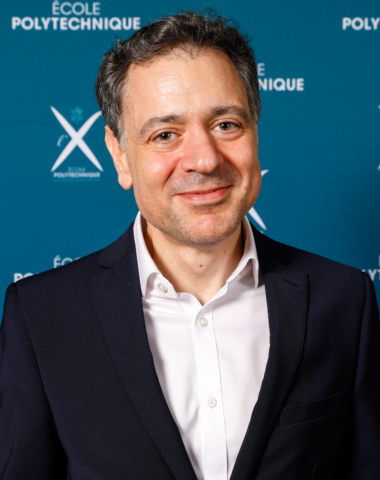Reverse Shark Tanks: a new way to initiate partnerships for start-ups
- It is difficult for investors to find a match between their needs and the solutions offered by start-ups.
- The "Shark Tank" is a format where start-ups pitch their solution to potential investors.
- The "Reverse Shark Tank" reverses the concept so that investors present their needs before the start-ups work on them.
- This format has been used between the shipping company Maersk and drone start-ups.
- The RST format can enable faster and easier development of technological solutions to open up emerging markets.
Established businesses have long been aware of the large innovative potential of start-ups. Yet, it is a known conundrum that harnessing this potential represents a significant challenge, because of the general lack of adequation between the start-ups vision and their potential clients’ needs. Various attempts have been made to overcome this issue, “shark thanks” being one of them. Yet these rely on start-ups pitching their ‘vision’ to larger companies and investors, with everyone hoping that their vision will correspond to an actual need, which is often very much akin poking in the dark.
This article relates a very interesting experiment tested in Canada and Denmark, aiming to overcome this issue by ‘reversing’ the process. In this “Reverse Shark Tank”, these are no longer the start-ups pitching their vision to large companies, but large companies pitching their needs to start-ups, who then have to provide – potentially together – a solution based on their technology that satisfies this need.
Thierry Rayna
In order for start-ups to survive, it is critical that their innovative ideas provide answers to potential customer needs. However, start-ups often struggle to match their solutions with potential customers, which delays their entry into the market. On one hand, start-ups find it challenging and expensive to identify marketable opportunities for their innovative technologies and create networks within that market whilst still focusing on refining their initial solution. On the other, potential customers can often lack the focus or experience to identify potential suppliers of innovative offers that are (or may become) able to satisfy their future needs. In other words, it can be hard for both types of players to find a match out of the blue. This is particularly the case in budding sectors that can be highly uncertain – such as the drone industry.
From time to time, cluster organisations, educational institutions, and others invite companies to connecting events such as hackathons. Here, participants are organised into small groups, who work intensely on solving specific, pre-defined challenges of actors on the customer side within a short time frame. However, in the case of emerging technologies, such as drones or quantum computing, it may not necessarily be evident what these innovative solutions can be used for in specific sectors or firms. There is a need for an innovative approach to closely connecting start-ups and potential customers.
Connecting start-ups and potential customers
The shark tank is a well-known concept that capital firms use to discover start-ups to invest in. It is now also widely known thanks to popular TV-shows under the same name in the USA, BBC’s “Dragon’s Den” in the UK, “Dans l’œil du dragon” in France, and Denmark’s “Løvens hule” (The Lion’s Cave). In short, this format provides start-ups with a few minutes to pitch a business idea, followed by a Q&A session where potential investors challenge the start-up and decide if they are interested enough to negotiate an investment with the start-up owners.

Our new concept of a “Reverse Shark Tank” (RST) is a way of establishing meaningful connections between start-ups and potential customers through encouraging and enabling co-creation of innovation solutions. It is done in reverse order as the potential investor – typically in the form of a large incumbent firm – first presents challenges that it has identified pertaining to a part of its business or supply chain. Thus, the “shark” is now pitching to a range of start-ups that thereafter present their technologies and how these may help solve the presented challenges. As such, the RST revolves around technological solutions to real challenges faced by industrials. Such a session for matching customers’ challenges with start-ups’ offerings can lead to subsequent meetings and co-creation of solutions.
The innovative method: Reverse Shark Tank
We tested the RST concept in both Denmark and Canada with a series of start-ups in the drone industry by introducing them to several, more established, firms. Drones are being considered an emerging technology, and the current EU focus on the technology is estimated to lead to 150,000 jobs and an annual revenue of €15bn by 20501. However, despite the huge potential for market opportunities, the industry is primarily composed of start-ups struggling to establish themselves in the marketplace. Using RST, we asked large companies to pitch challenges to the start-ups by presenting problems that they thought could be addressed using drone-based technology. Whilst the RST instigated an initial dialogue, it also pushed the participants towards a closer discussion that would hopefully lead to a fruitful innovation partnership.
As an innovation model, in practise reverse shark tanks take the form of events where large companies invite small companies and start-ups to come to their sites. We tested several formats to analyse the most effective. Our first event was held at Maersk – the largest shipping company in the world. Although the company was not yet ready to invest, a number of potential systemic uses for drones relevant to the company appeared, which had not previously been envisaged. Thus, Maersk obtained valuable inspiration for future business opportunities and were convinced that these would be on small and on an ad hoc basis. In Denmark, we also carried out an RST with Sund & Baelt, who run the two largest bridges in Denmark, where drone solutions were suggested for very detailed inspection assessment of maintenance needs on the infrastructure like searching for cracks in the concrete. This led to agreements of further collaboration between the company and a couple of the drone technology start-ups present at the event.
Finally, others like the Danish shipping company, DFDS, collaborated with drone start-up Upteko to create viable solutions to strategic problems such as risk management. They were able to develop drone technology to deal with emergencies such as “man overboard”. For this, the drones use infrared cameras and GPS to search the surrounding area for people who may be in the water. The basis for this now well-established partnership was one of the first reverse shark tank events.
The benefits of Reverse Shark Tanks
Seen from a market creation perspective, the RST format may enable more expedient and lean development of technology-based solutions to open nascent markets. Such mediating arrangements can close the gap between start-ups and potential customers that exist when both parties face difficulties identifying each other. Thus, the RST format is an advantage to both types of actors, recently demonstrated through a range of successful RSTs with drone technology start-ups and potential public and private customers in Denmark.
There were even cases where several of the start-ups formed new partnerships among them to better address the needs of potential customers even better.
At these RSTs, start-ups gained 1:1 access to potential customers, which helped them qualify and further develop their offerings as well as strengthen their innovative competences towards scaling-up their business. For the start-ups, they generally used the “open door” to present their solutions and getting the much-needed feedback from potential future customers. The start-ups got invaluable insights into what market needs they should develop for. They also expressed the invaluable insights they gained from listening to the conversations of other start-ups and how they pitched their solutions. There were even cases where several of the start-ups formed new partnerships among them to better address the needs of potential customers even better. Hence, they broadened their mindset from their own solution to seeing how best to match needs of potential customers through partnering with complementary solutions. The experienced benefits for the large firms were mainly in clarifying the potential use cases and how to reduce potential barriers to use. Moreover, the potential customers gained an overview of business-relevant opportunities in a jungle of innovative offerings and got the opportunity to influence the development of solutions to fit their needs.
The concept has worked very well for drone-oriented companies and so moving forward its success in other industries will be explored. Thus far, robotics companies and quantum technology networks have shown interest in testing the innovative concept.

















